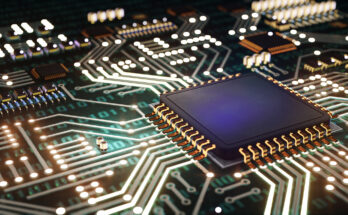The U.S. affirmed the bulk of its ongoing missile defense plans with the release of the first Missile Defense Review since 2010. President Donald Trump spoke from the Pentagon, warning of the growing threat of advanced missile capabilities by foreign powers, and calling for a greater integration of offensive and defensive capabilities to counter these threats. The president made clear that “space is a new warfighting domain,” and the MDR opens the door to the potential weaponization of space.
The broader nuclear threat of Russia and China will continue to be countered through deterrence, meaning ongoing and future defense against intercontinental ballistic missiles will be geared toward countering smaller state actors such as Iran and North Korea, cited as continued threats in the MDR. However, the emergence of hypersonic and advanced cruise missiles from Russia and China is a major concern that the U.S. will work to address.
Two major components of the MDR are the utilization of space and directed energy, both long-standing concepts. The U.S. seeks to develop an advanced space-based sensor layer to provide persistent awareness of missile launches, including hard-to-track hypersonic cruise missiles that do not follow the predictable parabolic trajectories of ICBMs. Work is already underway on improving defense against advanced cruise missiles in Washington, DC, as part of a multi-phase plan that intends to eventually expand surveillance and tracking of cruise missiles for the rest of North America.
The MDR also mentions the potential for establishing a space-based intercept layer for boost-phase missile defense. Such a capability could include interceptor missiles or directed energy weapons that would target a missile during its launch stage when it is most vulnerable, but developing and fielding these types of weapons would be complex and costly. The review does not actually establish a requirement for such a capability. Rather, the Missile Defense Agency will continue to study the feasibility of a space-based intercept capability, and will submit a report on its findings within six months of the release of the MDR. Protecting any mix of sensors or defensive measures will be a critical component of any space-based missile defense network, and the MDR cites the threats of anti-satellite capabilities being developed by Russia and China. One of the responsibilities of Trump’s proposed Space Force would be to address these types of concerns.
The U.S. hopes to enhance boost-phase missile defense through the use of directed energy weapons mounted on unmanned aerial vehicles, as well as modified air-to-air missiles carried by fighter aircraft like the F-35. These aircraft could also use their advanced sensors to share missile tracking data. The Pentagon has experimented with boost-phase lasers before. The defunct Airborne Laser, a massive chemical laser mounted on the nose of a Boeing 747, was terminated years ago due to high costs and concerns about the practicality of the weapon. Ongoing development efforts are focused on scaling down lasers so they can be carried on smaller aircraft. The difficultly with boost-phase intercepts is that you need to know roughly where and when a missile is going to launch in order to have an asset close enough to target the missile during its launch.
The Pentagon is already working on expanding its Ground-Based Interceptor inventory to 64 missiles by adding 20 missiles at Fort Greely in Alaska. The MDR cited a potential for up to another 40 missiles at the base, and also discussed the possibility of establishing a new GBI site within the continental U.S., an issue that Congress and the Department of Defense has been weighing for some time. However, the review does not call for pursuing either of these additional options, and says that decisions regarding further expansion of the GBI fleet will be made in the future based on emerging threat conditions. Work will also continue on an improved booster and exoatmospheric kill vehicle for the GBI fleet, capabilities that were first tested in 2017. The MDR also discussed bolstering existing ICBM defense by leveraging lower cost SM-3 missiles to supplement existing GBIs. The SM-3 is currently used for regional defense against shorter-range ballistic missiles. The MDA will test an SM-3 Block IIA against an ICBM target in 2020.
The integration of U.S. and allied missile defense capabilities was highlighted in the MDR, and the president discussed working with countries like Japan and North Atlantic Treaty Organization allies. Trump has been a frequent critic of some members of NATO for failing to meet an obligation to spend at least 2.0 percent of GDP on defense. During the MDR briefing, the president said he’ll stand behind NATO 100 percent, but that members need to step up in terms of how much they contribute to defense. Integrating missile defense capabilities with allies helps to expand the protective umbrella through data sharing, allowing different systems to work together to track and defeat missile threats. Of course, this is a complicated endeavor, and the U.S. is already working on enabling its own diverse mix of radars and launchers to work together.
Shaun's deep-rooted interest in military equipment continues in his role as a senior defense analyst with a focus on the United States. He played an integral role in the development of Forecast International's U.S. Defense Budget Forecast, an interactive online product that tracks Pentagon acquisition programs throughout the congressional budget process. As editor of International Military Markets – North America, Shaun has cultivated a deep understanding of the vast defense markets in the United States and Canada. He is a regular contributor to Forecast International's Defense & Security Monitor blog and has co-authored white papers on global defense spending and various military programs.




